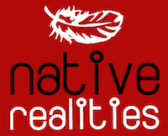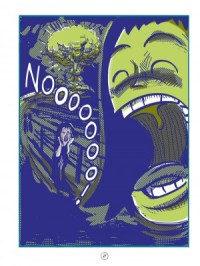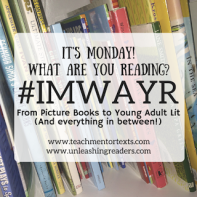Everyone agrees with Chimamanda Adichie when she warns of the Danger of a Single Story in her oft cited, taught, and shared TED Talk. The talk was released in 2009 and took the progressive world by storm – which means lots of sharing on social media, thumbs upping, and echoes of “absolutely” across micro-breweries and small batch coffee shops alike. On this morning (March 7, 2018) there are 14,607,326 views on the TED Talk site putting her at #24 of the top 25 most popular talks of all times.
Keep in mind, this list is not about the TED Talks that have been produced, instead it is what we, the viewers and sharers watch and show that we value. There are 10 women and 15 men – if your reaction is “great!” please think about the fact that this is still less than half, and none are gender non-conforming. In addition, the list is ridiculously White. Like, I laughed and then I got mad, and then I started to laugh again but not in a good why WHITE. Adichie is the ONLY Black speaker on the list and the ONLY Woman of Color on the list, and one of only two people of color, along with Pranav Mistry. In other words, TED talk viewers love the single story of people of color.
I bring this up because of there is an extremely popular single story about THE Native American experience published in 2007. You know the one. The author, Sherman Alexie has been shown to be a repeat sexual harasser. If you want to read through the whole bunch of ugly go to Debbie Reese’s open letter. She has done an excellent job collecting and cataloging the big deal.
I want to address the wailing I have seen that come down to “Well, if I can’t teach that book what am I going to do?!?!?!”
First off, DON’T PANIC. There are other books by and about Native Americans. Historical fictions, memoir, realistic fiction … all of it. The fact that you do NOT know about anything besides Alexie’s books is your responsibility. You had one book and you stayed with it. It was your comfort zone or Zone of Proximal Comfort (ZPC) (yes, that is a Vygotsky riff^). It is time to break out of your own ZPC and by doing so you are going to be able to begin (or continue) dismantling the single story about Native American and Indigenous communities that is comfortable.
Here are some books that you should read and bring into your classrooms:
Trickster
Native American Tales: A Graphic Collection
I reviewed this book 5 years ago and I still use it (here is a link). In my original review I wrote, “The individual stories are short, disruptive in the brevity of language and the wide array of artistic styles. The stories follow each other, bouncing from an almost creation story about Coyote disrupting the arrangement of stars in the sky, to a tale of a mean crow kicking sea anemones,to a Choctaw tale about how rabbit got a tiny tail. And many other stories, all providing another tale, another style, another look at the world.” and that pretty much still stands. Buy it. Read it. Share it.

Looking for something for older readers? Look no further than #NotYourPrincess edited by Lisa Charlieboy and Mary Beth Leatherdale (here is my review). In my original review I wrote, “This is truly a multimodel text. The images are integral to this collection. They are not separate from the words. Instead, both interact in familiar ways and I found myself using the same kinds of strategies and skills I use to read graphic novels. Many of the photos feature Indigenous women looking directly at the reader, along with narratives that directly address the reader, thus breaking the 4th wall. This is a powerful choice to make, to draw the reader in and now allow the comfort of detachment.

How about a buddy book, set in the 70s, for middle schoolers? If I Ever Get Out of Here by Eric Gansworth is that book. It deserves so much love, as well as a second or third read. Gansworth weaves music like Queen, David Bowe, and Wings into the lives of two pretty normal, if not completely different, teen boys. It is a quite and elegant treatment of Native American reservation life as nuanced, loving, and complicated instead of simply violent and desperate. In addition, there is a military kid, dads and sons, lots of conflict and a fair amount of cooperation.
Best of all there is a sequel! Give Me Some Truth will be coming out in May, 2018! Here is your chance to pre-order.
 I’m reading and will be reviewing two books by published by Native Realities Press. They have been on my “to read” pile and I am finally getting to them. The first one is Tales of the Might Code Talkers which I have read and I will be teaching this semester. The second is a wordless comic, The Wool of Jonesy by Jonathan Nelson which a few of my students have read and been moved by the complexity and heartbreak of it.
I’m reading and will be reviewing two books by published by Native Realities Press. They have been on my “to read” pile and I am finally getting to them. The first one is Tales of the Might Code Talkers which I have read and I will be teaching this semester. The second is a wordless comic, The Wool of Jonesy by Jonathan Nelson which a few of my students have read and been moved by the complexity and heartbreak of it.
If you want to do some of your own exploration, I suggest you head over to Debbie Reese’s blog American Indians in Children’s Literature. There you will find what you have been missing because you have been resting, comfortably, in your single story.



 I wanted to draw attention to work other than March on this MLK day. So, I want to highlight and call attention to the graphic novel adaptation of Kindred by Octavia E. Butler.
I wanted to draw attention to work other than March on this MLK day. So, I want to highlight and call attention to the graphic novel adaptation of Kindred by Octavia E. Butler. From the first page with the startling image of a Black woman in a hospital bed and the first line of text, “I lost my arm on my last trip home” I was hooked. This book captured my attention and held on for dear life. I have read it several times, and still think about it. There is something artfully painful about the struggle, both historical, and fantastical that this graphic novel captures.
From the first page with the startling image of a Black woman in a hospital bed and the first line of text, “I lost my arm on my last trip home” I was hooked. This book captured my attention and held on for dear life. I have read it several times, and still think about it. There is something artfully painful about the struggle, both historical, and fantastical that this graphic novel captures.


 d the South.
d the South. Once again, Gill uses his signature image of “black face” as a way to depict the N-word. Just to be clear, this image is playful but not cute. It seems to cute the tension without loosing the power behind the message. Bessie is chased by a group of white hooded crows who have piled into a truck to pursue her. She gets away but it is clearly not the last time she encounters them.
Once again, Gill uses his signature image of “black face” as a way to depict the N-word. Just to be clear, this image is playful but not cute. It seems to cute the tension without loosing the power behind the message. Bessie is chased by a group of white hooded crows who have piled into a truck to pursue her. She gets away but it is clearly not the last time she encounters them.

 backbone of the operation and has no problem getting on the wrong side of the cabin harpies (literal witches). There is romance, excitement, and intrigue as the summer moves on.
backbone of the operation and has no problem getting on the wrong side of the cabin harpies (literal witches). There is romance, excitement, and intrigue as the summer moves on. her own secret – there is something worse than humans or the “big three”. Together Skye and Mia help each other get to know themselves better.
her own secret – there is something worse than humans or the “big three”. Together Skye and Mia help each other get to know themselves better.
 My professional reading practices have changed in the last year. I am slowly working through a subset of all the graphic novels published in the last 10 years or so. I read, graphic novels with female protagonists that might show up in a k-12 classroom almost exclusively .
My professional reading practices have changed in the last year. I am slowly working through a subset of all the graphic novels published in the last 10 years or so. I read, graphic novels with female protagonists that might show up in a k-12 classroom almost exclusively . One of the books I would never had picked up, if not for this project, is Digger: Volume One by Ursula Vernon, published way back in 2005. Originally a web comic Digger, a no nonsense wombat, ends up tunneling into Lord Ganesh’s temple and talks to the resident statue. T
One of the books I would never had picked up, if not for this project, is Digger: Volume One by Ursula Vernon, published way back in 2005. Originally a web comic Digger, a no nonsense wombat, ends up tunneling into Lord Ganesh’s temple and talks to the resident statue. T

 Later on in the book Digger is being hunted by Ed’s old pack-mates who have the same sort of stilted,awkward speech pattern. They wear loin clothes, carry spears, have painted faces and feathers. It is not clear to me what indigenous community is supposed to be represented here but it gives me pause.
Later on in the book Digger is being hunted by Ed’s old pack-mates who have the same sort of stilted,awkward speech pattern. They wear loin clothes, carry spears, have painted faces and feathers. It is not clear to me what indigenous community is supposed to be represented here but it gives me pause.




 Recently, I had the chance to read The Nameless City (2016) by Faith Erin Hicks. Full disclosure, I am a big fan of Avatar: The Last Airbender cartoon, and I liked The Legend of Korra, especially the last season. I mention this because the style Hicks uses, in this first in a planned trilogy, evokes a similar feeling. The setting, like The Last Airbender, is what I can only describe as “vaguely Asian-ish”.
Recently, I had the chance to read The Nameless City (2016) by Faith Erin Hicks. Full disclosure, I am a big fan of Avatar: The Last Airbender cartoon, and I liked The Legend of Korra, especially the last season. I mention this because the style Hicks uses, in this first in a planned trilogy, evokes a similar feeling. The setting, like The Last Airbender, is what I can only describe as “vaguely Asian-ish”.
